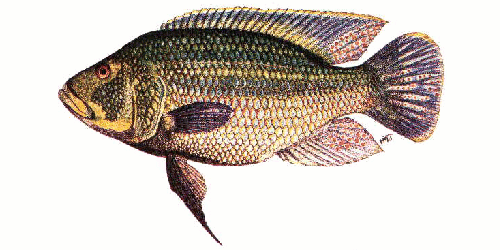 These
are essentially bream, but they seem to be more predatory than the other
species, and are more often caught on artificial lures than on bait.
These
are essentially bream, but they seem to be more predatory than the other
species, and are more often caught on artificial lures than on bait.
They can be found in most rivers, dams and lakes around the country,
and there are several farm dams that they have taken over and seem to become
stunted when they over populate the smaller dams.
They are found in much larger sizes above the Victoria Falls, but
they are not known to be in Kariba, although they do have a "cousin" in
the lake.
Generally most anglers fish for them with smallish plastic jigs, or spin or troll with plugs such as the Rapala Shadrap.
They tend to hang around at about 3 to 10 foot deep (sandy bottom) when spawning (around September/October time), and a lot are caught at this time by the trollers.
SMALL TIP
When they are spawning a "spinner bait" (or
Buzz Bait) cast past a likely looking spawning anthill, and then "ripped"
back over the weed to fall into the clearer hole is often successful. (Watch
out for the Bass in Darwendale when doing this). Also using the Spinner
bait fairly quickly on the surface to act like a buzz bait, and then slowing
down and droping it near the structure seems to work quite well.
The rest of the year they are caught around any structure that appears to hold a possibility of an ambush place for food, from anthills to long weedbanks either floating or submerged.
Remember as they hang around "structure" be prepared to lose a bit of tackle, and make sure you have more than one of what you are catching on.
The bigger specimens seem to be caught more in the winter period when the fishing is harder, off the deeper anthills or structure and fishing slowly with a jig or deep diving crankbait.
SMALL TIP
When fishing with a plug (or crankbait), try
a start stop retrieve, this often gets them going when they are a bit slow.
They tend to stay close to structure (submerged anthills, rock piles,
and trees) as they are predators, and in areas where there is a lot of
weed near the surface, you may see them attacking smaller fish or chasing
the flying insects.